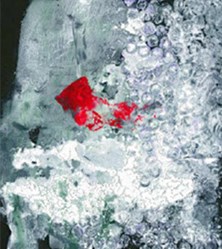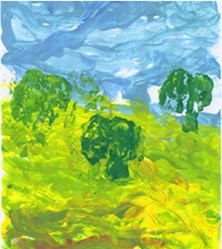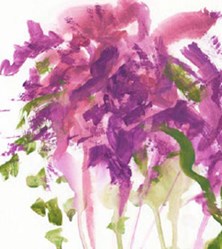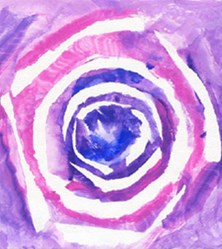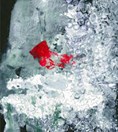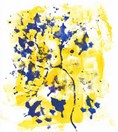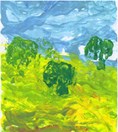Making memories
Making memories is a natural part of family life and childhood, but when your child has a serious illness, you may feel even more determined to create special memories. You want to capture every moment you can, but at the same time, the need or pressure to create memories painfully reminds you that your time together is limited and precious.

You may worry that if you focus on making memories or creating a “legacy” for your child, you are letting go of hope or accepting the idea of death. You might feel that you will make death come sooner. These are common and natural worries. Try to let go of those ideas. Making memories and enjoying time together would be just as important if your child was not sick.
The following sections describe some ways you and your family can create memories together.
You may spend a great deal of time together already, but a lot of that time may be spent on medical appointments, running errands, or doing chores. It’s hard to find time to simply enjoy being together and doing what you’re doing.
Time together doesn’t have to be extravagant, expensive, or even a long time. It could be a trip to the park, going for ice cream, movie night on the couch, or snuggling and reading stories together before bed. It doesn’t matter what you do. Try to focus on what you’re doing in the moment rather than on your “to do” list.
Ask your healthcare team about organizations that grant wishes to children with an advanced illness. These wishes include trips, special events, gifts, or a chance to meet a person they admire. Wishes can create a sense of magic and fun for the child and family. They can bring the family closer together and give surviving members a happy memory. But sometimes, children are too ill to really enjoy the wish. Some parents say the experiences are bitter-sweet because the wish makes them realize their child is very ill and likely to die.
“We had a photographer come into the home. We just wanted her to do family pics, but she said, “What about photos of you, being you, providing care?” She took photos of how feeds worked for Tyler; how we sat by his chair and held his hand--just those normal intimate moments that a family picture doesn’t capture. It was one of the best things we ever did--just those real-life, lived moments of what life was like. There is a lot of love and compassion that was captured in those photos of caregiving.” – Darren, father of Tyler
You may wish to make a record of your times together. Write about them in a journal or a blog, take photos or make an audio or video recording. Remember to:
- Include yourself in photos and in recordings
- Record regular, everyday activities, not just special events
These photos, videos, or written stories will help you remember your times together.
Living with a serious illness and treatments has many challenges. Find ways to notice the challenges and celebrate the accomplishments for your child and for your family. These challenges include:

Some ways to celebrate these accomplishments include:
- Bravery Beads - These are given out in some hospitals. Each bead represents a particular procedure or event that your child goes through. Your child can collect them and add them to a necklace that tells the story of their experience to share with others. Make your own kit at home. Choose different beads for each difficult thing your child goes through. If possible, include your child or their siblings in creating the list of events and choosing beads.
- Calendars - Use them to keep track of, and then cross off, each treatment, test, procedure, or appointment as your child completes it.
- Charts - Make a chart to record each difficult thing your child has to do. Leave space for your child to add a sticker each time they complete it.
- Celebrations - Plan something special to mark milestones like the end of a treatment cycle, the 10th or 100th day blood test or day since leaving the hospital. Celebrations can be simple – dinner and a movie – or bigger – a trip or party – depending on which milestones you wish to mark and how you wish to celebrate.
- Celebrate siblings - These ideas will help your other children too. Use them to mark the days they handle extra responsibilities or days when they are at home while you and your child are at the hospital. These strategies validate how much children and family members are going through. You can shift the focus from the difficult experiences to the strength and resilience your other children are using. Your family will also have a record of the experience to look back on.
“We went to a pottery place and we made a beautiful huge bowl with all of our handprints on it and that’s where I keep his bravery beads. We did a few things like that on our own. We also ended up getting fingerprint necklaces afterwards through the funeral home.” – Danielle, mother of Keaton
Spend time together making a piece of art, a video, music, or something else. You will create something that you can keep and have a memory of the time you spend together. Below are some ideas, including instructions and sample photos.
Hand or foot print art
This is a great, simple way to make something special that captures a piece of everyone who takes part in the activity. Cover your hand, fingers, or feet, with paint, or trace them onto paper, fabric or a canvas. You can find many different projects online, including some that are very simple and others that are more elaborate.
- How to make it - Instructions: Hand or foot print art
Fabric hug
A fabric hug looks like a scarf with an open hand at each end. Fabric hugs are one way for family members to give and feel each other’s love even when they’re not together. Your child can make one for others. You or their siblings, friends, or other family members, can make hugs for your child. These hugs can give them some extra comfort at times when they’re staying in the hospital, having a procedure, or having a hard day.
- How to make it - Instructions: Fabric hug
Clay family beads
Every person in a family influences each other and each person helps make the family the way that it is. Even when they are not all in the same place at the same time, people in a family are still connected with each other, and still a part of each other’s lives. “Family” can include people who live very far away, people who have died, close friends or other important people.
Family beads offer a concrete way to remember each person’s contribution to the family. As you make them, you can talk about your family. In this activity, each person will make their own beads made up of different coloured pieces of clay, that represent different family members.
- How to make it - Instructions: Clay family beads
Paper memory beads
These paper beads can be made to represent memories, people, or things that bring comfort. You can write a list of memories or names of people on the inside of the bead. The writing will be hidden once the beads are completed, so it will be private and personal.
- How to make it - Instructions: Paper memory beads
Scrapbook
Make a scrapbook of pictures, art work, written notes or stories, calendars and other small items that help to tell a story. You could tell the story of your child’s time in the hospital, or of a family trip, or of your child’s life. Scrapbooks can be as simple or as fancy as you choose and can include anything you want.
- How to make it - Instructions: Scrapbook
Memory quilt (painted or sewn quilt)
A quilt can be comforting, can offer something to look at and talk about, and can be a collection of memories. It can be simple or complex and made from whatever materials you have.
- How to make it - Instructions: Memory quilt
